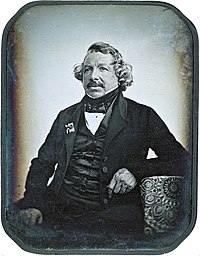
Photo from wikipedia
This study demonstrates the feasibility of conducting on-site large-scale image-based measurements for indoor airflows characterisation. To illustrate the potential of our method, we chose to study the suction flow generated… Click to show full abstract
This study demonstrates the feasibility of conducting on-site large-scale image-based measurements for indoor airflows characterisation. To illustrate the potential of our method, we chose to study the suction flow generated by a laboratory fume hood in operating conditions. As a matter of fact, laboratory fume hoods are frequently subject to routine checks during which air speed measurements by hot-wire anemometry are performed. However, classical point-to-point hot-wire anemometry may be not sufficient to detect and locate potential leakages. To improve these controls, we developed and tested a new method based on particle image velocimetry principles, which is non-intrusive and authorizes a good spatio-temporal analysis. To face large-scale and on-site issues, we had to make some adaptations. For this reason, we used tracers like bubbles or smoke which have good scattering properties. We also developed our own low-cost light system. To compute velocities from image sequences, we developed an optical flow algorithm based on a large-scale flow model instead of using traditional correlation. The tested method gave good results with a good agreement with sparse hot-wire anemometry measurements but with a wider spatial distribution. In addition, the method provided turbulence intensity estimation and a good monitoring of dynamic flow features, which is important for the detection of leakages.
Journal Title: Indoor and Built Environment
Year Published: 2019
Link to full text (if available)
Share on Social Media: Sign Up to like & get
recommendations!